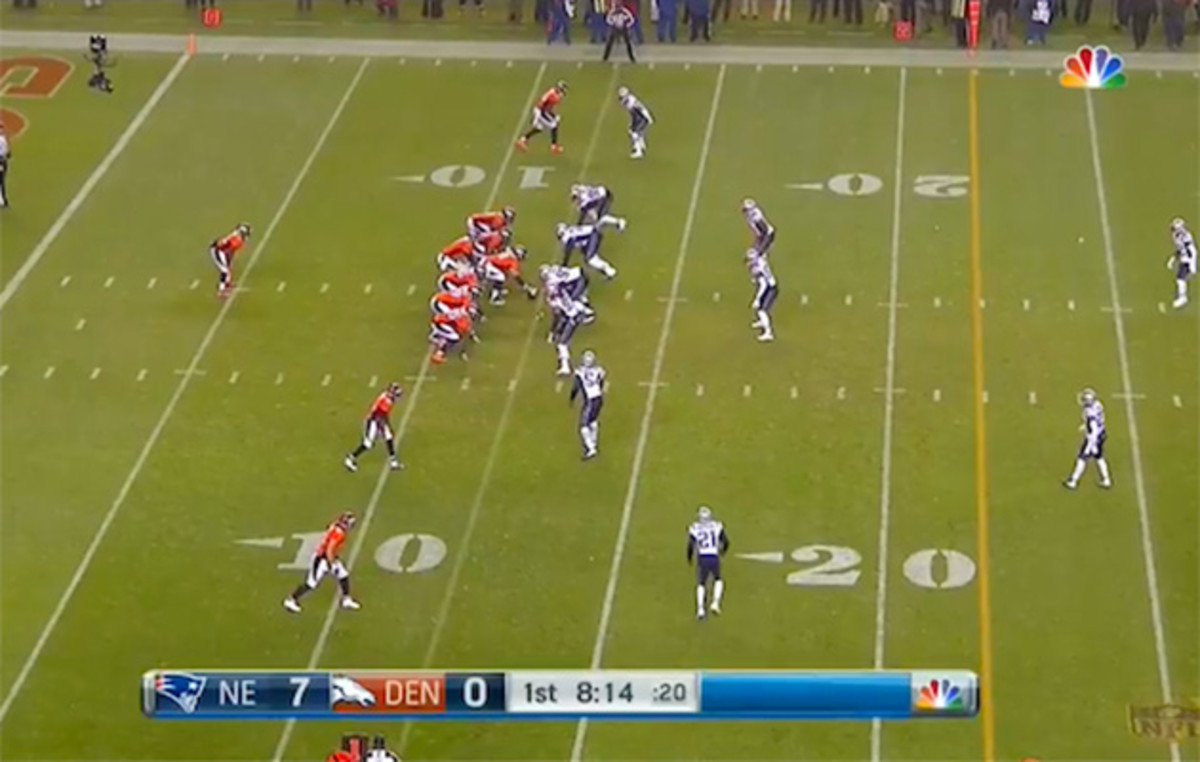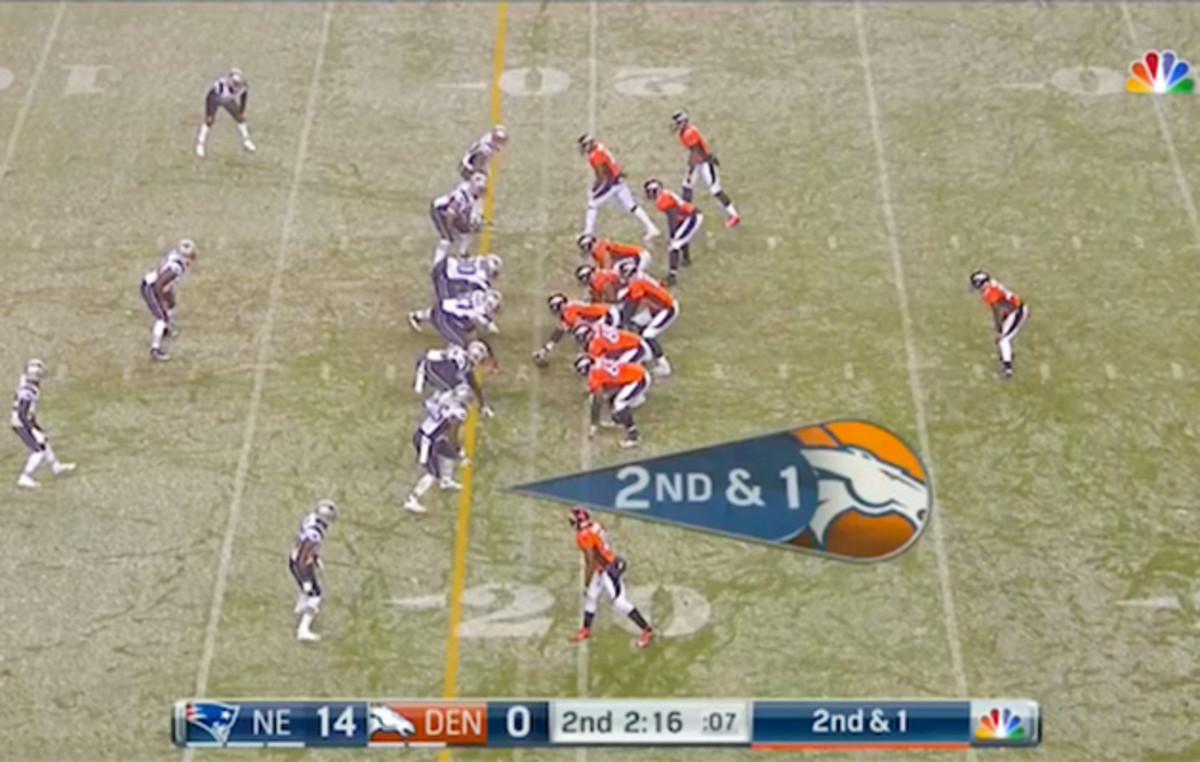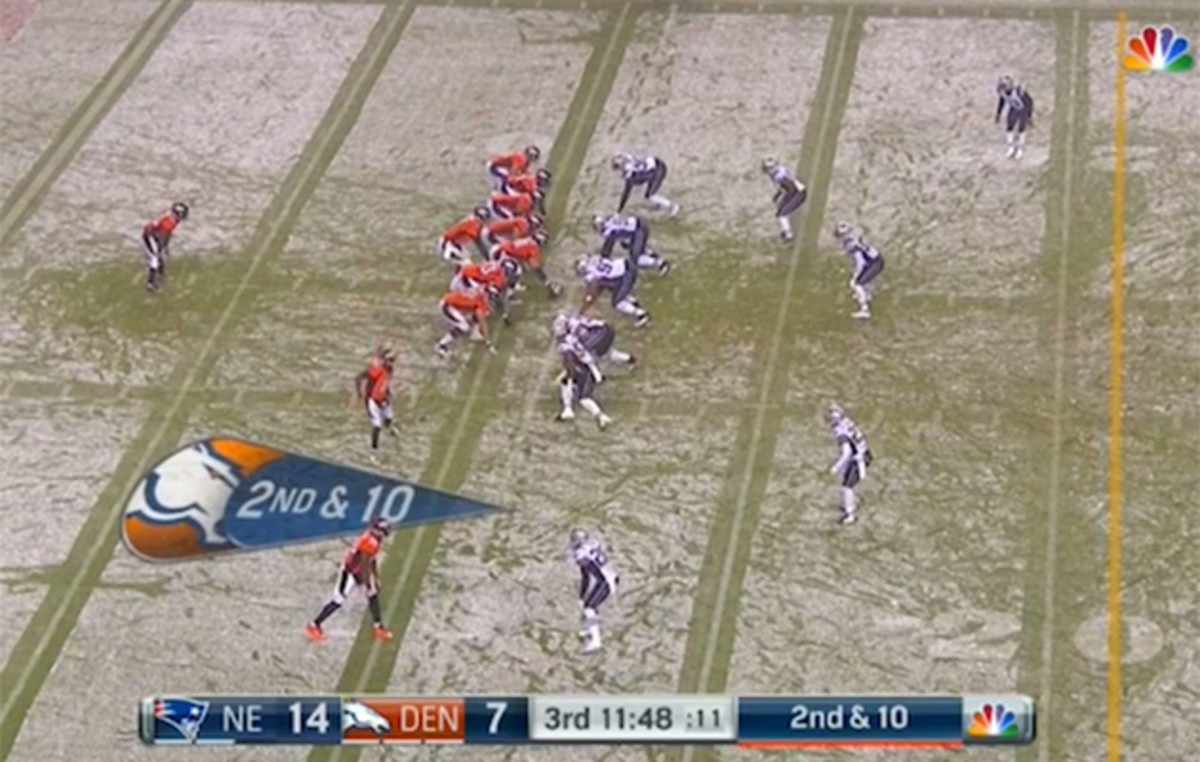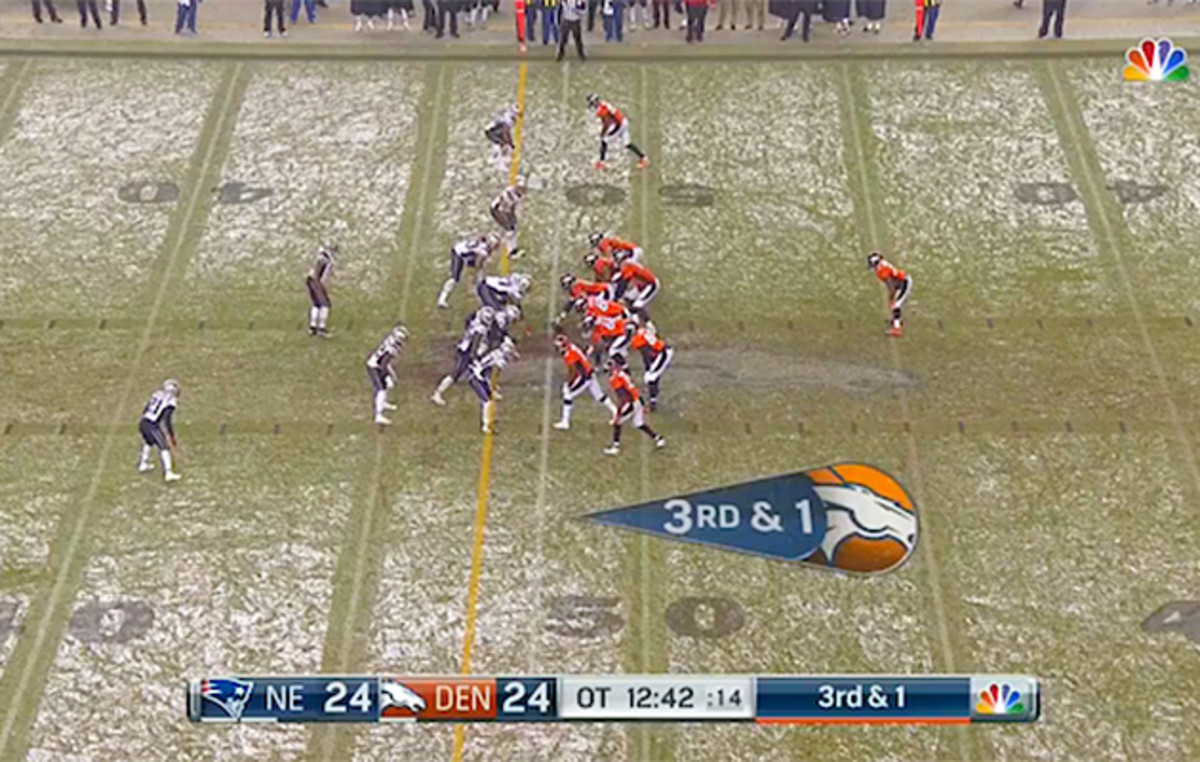Fantasy Fact or Fiction: Broncos' run game a force to be reckoned with

When the Broncos and Patriots faced off in Week 12 for another classic—with Denver claiming this round in overtime, 30–24—there was, of course, one familiar face missing from the game: Peyton Manning was on the shelf for the second straight week. For accounting purposes, Manning is out because of a foot injury. Truthfully, though, he no longer gives the Broncos their best chance to win. Brock Osweiler is not only a better quarterback at the moment, he’s a far superior fit for the personnel around him. If you don’t believe me, just ask Denver’s running backs.
• Join our risk-free Week 13 FanDuel league. Double your entry fee or get refunded! New users only.

Fact: Denver’s run game is a force, and both heads of the monster will be fixtures in the fantasy playoffs
It was just about this time last year that Denver’s offense took a turn toward the run game and C.J. Anderson surged to prominence. In a November 9 win over the Raiders last season, Anderson totaled 163 yards from scrimmage on 17 touches. Two weeks later, he ran for 167 yards in a win over the Dolphins. He followed that up with 168 yards and a score against the Chiefs. At that point, Denver was a run-first team. Manning threw for more than 300 yards just once in the final five games, beginning with that win over the Chiefs, and had more interceptions (six) than touchdowns (five).
Waiver Wire: Tight end injuries make Rudolph, Miller attractive pickups
The transformation, however, was not complete. Denver waved goodbye to John Fox and Adam Gase during the offseason, hiring Gary Kubiak to take over as head coach and offensive guru, despite the fact that his system, which succeeded in previous stops with Denver, Houston and Balitmore, clearly ran counter to what best suited Manning. The growing pains were apparent in the team’s Week 1 19–13 win over the Ravens, and never really went away.
Manning is solely a shotgun or pistol quarterback at this stage of his career, but Kubiak’s system requires the quarterback to be under center most of the time. The team shifted philosophies in September, with the gravity of Manning’s presence pulling the offense in his direction. That was mildly effective for a few weeks, until it became clear that Manning couldn’t physically run his own system, either. A foot injury opened the door to turn to Brock Osweiler and the only offense Kubiak every really wanted to run. After two games, there’s little chance they go back. That’s great news for both Ronnie Hillman and C.J. Anderson, both of whom could have a whole lot to say about who wins your league’s playoff championship.
With Osweiler under center the last two weeks, Kubiak has finally been able to run the system he installed over the summer true to its natural form. That system features a lot of single-back sets, zone blocking to set up cutback lanes, and stretch runs and pitches to the outside. It requires the quarterback be under center if it’s going to be effective. Manning was largely unwilling and incapable of doing that, and he has the pull to change the offense. Osweiler does not, but anyone would be a fool to want to do so at this point.
Fantasy Playoff Prep: Three potential X-factors in two-quarterback leagues
Heading into Denver’s Week 11 game in Chicago, the team’s best rushing output of the season, in terms of net rushing yards, was 160 yards in their Week 8 win over the Packers. That marked just the second time all year they had eclipsed 100 net yards on the ground. In the win over the Bears, which was Osweiler’s debut as a starter, the Broncos netted 170 rushing yards. That season high lasted exactly one week.
As they knocked the Patriots from the ranks of the undefeated in dramatic fashion in Week 12, they ran for 179 yards as a team, including 48 on Anderson’s walk-off touchdown scamper in OT. Through the team’s first nine games of the season, Hillman and Anderson combined for three 100-yard games. They’ve had two in Osweiler’s starts, with Hillman racking up 102 yards against the Bears, and Anderson rambling for 113 in the triumph over the Patriots. This is not mere happenstance or driven by the opponent. It has everything to do with the quarterback change, which gave way to a philosophical shift in the way the team runs its offense.
• KING: Behind Osweiler, Denver finds new life and hands Patriots first loss
Let’s take a look at a few plays from the Broncos’ win over the Patriots that illustrated what the team is doing on the ground that it wasn’t doing for the first two-plus months of the season.
The first is a simple, innocent-looking nine-yard run by Anderson on a first-and-10 from the Denver 12-yard line about halfway through the first quarter. The Broncos come out in a typical Kubiak formation, with three wide receivers, one tight end, and a single running back. Here’s what it looks like when Osweiler takes the snap.

At the snap the entire line, with the exception of tight end Virgil Green, who is all the way on the right of the line, crashes left, with Anderson running behind his left guard and center. The initial attack forces the Patriots’ six in the box to mirror the line and Anderson moving to their right. However, Green is able to seal off Jabaal Sheard, and that creates a huge cutback lane for Anderson. He scoots through it to set up a second-and-short.
Those are the cutback lanes Kubiak made famous. They helped Terrell Davis, Arian Foster and Justin Forsett turn in star seasons over the years. They should also be a staple of the Denver offense for the rest of this season.
Another staple of Kubiak’s rushing attack are pitches and sweeps that rely on patient runners and pulling linemen. We saw just such a play run to perfection on the Broncos’ first touchdown against the Patriots, a 19-yard run by Hillman.
The play comes on a second-and-one, meaning the entire playbook is open to Kubiak. He has a tight and two receivers bunched to the right, with Hillman alone in the backfield and Emmanuel Sanders split out to the left. Osweiler is under center.

The play is magnificently designed and perfectly executed. Pay close attention to Hillman’s patience, pulling blocks by Vernon Davis (No. 80) and Michael Schofield (No. 79), and backside seals by Cody Latimer (No. 14) and Bennie Fowler (No. 16).
The blockers all take care of their responsibilities, and Hillman has just enough speed to make sure Jerod Mayo gets nothing more than an arm at him. Once he’s through that, he’s home free. It’s also a play that can’t be run out of shotgun. It’s not that the Broncos couldn’t have run this play with Manning on the field. It’s that they wouldn’t have even attempted it, because Manning wasn’t fit to be under center. Plays that weren’t available three weeks ago are suddenly becoming the team’s bread and butter.
Do not forget that play. We haven’t seen the last of it.
Broncos’ win over Patriots solidifies that this is Brock Osweiler’s team now
Perhaps the best trait about the new-look Denver run game, from both real-life and fantasy perspectives, is that Hillman and Anderson are capable of executing every play in the playbook. There isn’t anything that is the sole purview of one or the other. Take the team’s first run play after halftime as an example. This is an entirely new look at the snap, but the play itself will look awfully similar to the first one we broke down with Anderson in the backfield. This time, however, it’s Hillman.
Sanders starts on the left side of the formation but comes in motion and lines up in the slot, with Demaryius Thomas outside the numbers. Both tight ends are to the left of the formation.

Once the play begins, the action is almost identical. The entire left side of the line crashes in that direction, with Hillman starting out going directly over the left guard. This time, it’s Schofield’s assignment to seal off the backside to open up the cutback lane. He actually whiffs on the block, but Hillman breaks Rob Ninkovich’s tackle attempt, leading to a 15-yard gain on 2nd-and-10.
The principles of this play are exactly the same as the one Anderson ran so effectively in the first quarter. Get the action moving in one direction, seal off the backside with the one blocker paying attention to the weak side of the play, cut it back and rip off a big chunk of yardage. The look is a bit different, the exact formation is altered, and the man running the ball has changed, but both plays are successful for the same reasons. That’s a scary thought for teams in the Broncos’ way.
Let’s wrap this up with the play that ended the game, as well as the Patriots’ chances for an unblemished season. Remember how I said to not forget the toss sweep on which Hillman scored earlier? It was so effective that the Broncos went back to it on their third play of the overtime period.
Take a look at the formation in the screenshot below, and compare it with the one above of Hillman’s touchdown run. The strong side is to the left on this one and Anderson is in the backfield, but everything else is a carbon copy. It’s even a third-and-one, compared with Hillman’s earlier second-and-one jaunt.

When you watch the GIF below, you’ll likely get the same flashbacks that Bill Belichick suffered as the Broncos were celebrating the win. The lone difference on this play is that the center, Matt Paradis (No. 61), also pulls, along with Davis and left tackle Ryan Harris (No. 68). Anderson easily picks up the first down behind their blocks, as well as those of Sanders and Latimer, and then scoots past David Bruton for the game-winning touchdown.
The Broncos are 2–0, including their most impressive win of the season, with Osweiler under center. Those last two words represent the operative part of that sentence. With a quarterback capable of playing under center at the helm of Kubiak’s offense, the run game has taken flight. Anderson, Hillman and their fantasy owners will continue to reap the benefits.
